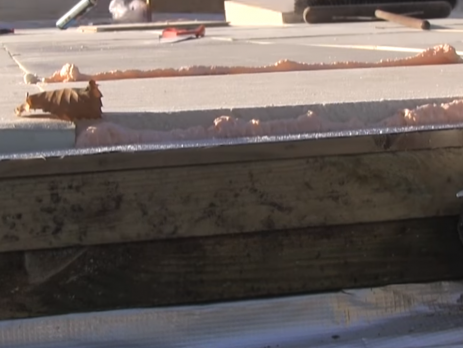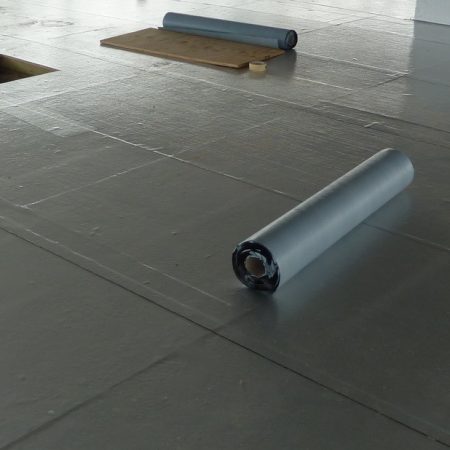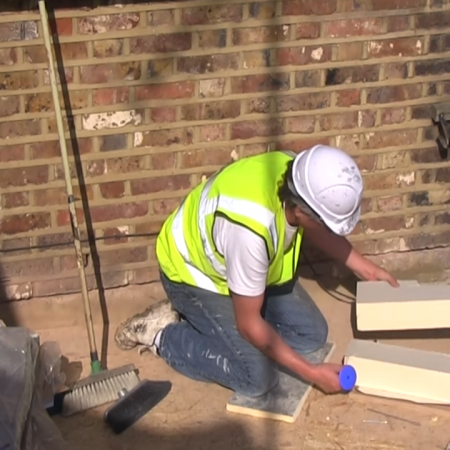Why a Vapour Control Layer is Essential in a Flat Roof
A vapour control layer or VCL on a warm flat roof sits between the roof decking and the insulation.
A vapour control layer helps you shield your building from the consequences of condensation. Condensation is generated when warm moist air rises and condenses into a liquid on contact with the cooler areas above the insulation. The notion behind a vapour control layer is to install it on the room side of the insulation so it stops the passage of warm moist air entering the structure.
Why is a VCL so Important in a Flat Roof
A VCL is a very important component in your build up acting as one of the protective layers that minimises the amount of warm moist air that comes into a construction aspect. A VCL in conjunction with the correct use of venting and membranes will essentially eradicate the risk of interstitial condensation. It’s the two design fundamentals working collectively that greatly reduce the destructive effects of condensation on the structure.
Consider it like this; a jumper will keep you lovely and warm but a jumper AND a water-resistant coat will give you a better possibility of keeping warm and dry in a storm.
A VCL prevents damp and mould which generally, helps to prevent major respiratory problems, according to the NHS. As well as major health ramifications, condensation can also cause structural problems, weakening wooden framed structures and corroding other materials. An additional major benefit of the VCL is that it will prevent installed insulation becoming damp and losing it’s thermal properties.



Comments (5)
Hello Steve,
Thanks for all your great video’s for a warm flat roof, however what I am not sure about is my builder has only bent up the vapour barrier which sites on the SOB layer to level with the top of the insulation and it is not taped to the built up timber kerb it is just loose will this be ok or should it be taped up against the kerb, or go right over the wooden kerb, I will have a layer of OSB on top of the insulation and will put a layer of EPDM to finish the roof.
Many Thanks
David
Thanks for contacting me realistically without knowing what vapour control layer you have used it’s hard to say if what he has done is correct or not but bear this in mind a vapour control layer is also a fair control layer sometimes this is known as an air vapour control layer AVCL So the question you have to ask yourself is this is the vapour barrier stopping all air from transferring from the room below up into the installation? If there is The vapour control layer on all edges and on all joints is normally the way to go. As you probably are aware we use a self-adhesive vapour control layer this self seals itself to itself and to all edges that’s making it completely airtight. Hope this helps Stevemovement of air then they will be movement of moisture and that’s not good. Taiping The vapour control layer on all ages and all joints is normally the way to go. As you probably are aware we use a self-adhesive vapour control layer this self seals itself to itself and to all edges that’s making it completely airtight. Hope this helps Steve
Hi. I came across your YouTube channel whilst researching cold flat roofs. I can’t find anyone with your knowledge elsewhere so I’d be very grateful for some advice. I’m building a 6mx7m extension on to my bungalow with a cold flat roof. My plans are basic and show no exact venting in the roof. Roof will be EDPM on osb on firing on 8×2 with 150 celotex between rafters and 40mm celeotex backed plasterboard underneath. Will a vapour barrier be required?
And also is it good practice to run firing strips across the joists. This would help ventilate the entire roof? I will have vented soffit on two sides of the extension and the rafters will extend in to the original loft with some vented ridge tiles being added to the original roof.
Thanks in advance
Yes, you definitely need a vapour control layer that should be under your joists and be continuous the vapour control layer is also an airtightness control layer so what you are really trying to do is to stop any movement of air from the room below up into the vented space above. The vented space above needs to have as much cross ventilation as you can get, if you put some battens going across the joists and lift the roof decking up you can also have ventilation right to left and front to back all of this will help the more ventilation you can get in a cold flat roof the better..
Hi
I moved into a new build house 3 years ago with a fibreglass flat roof. During frosty cold days I have leaks in the ceiling corners in one north facing bedroom.
Is this a failure of the vapour barrier and what can be done to resolve it.
Many thanks in advance.